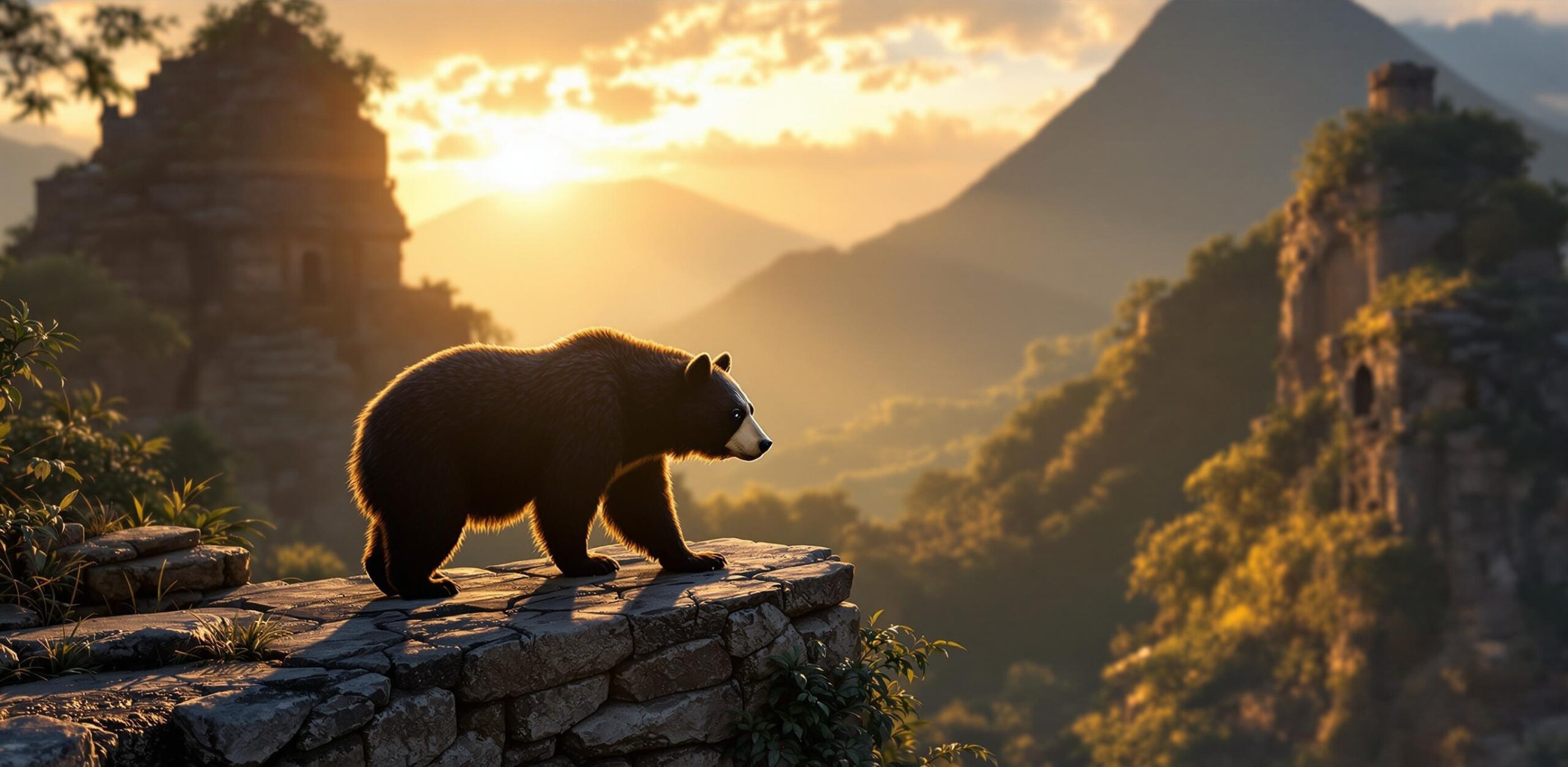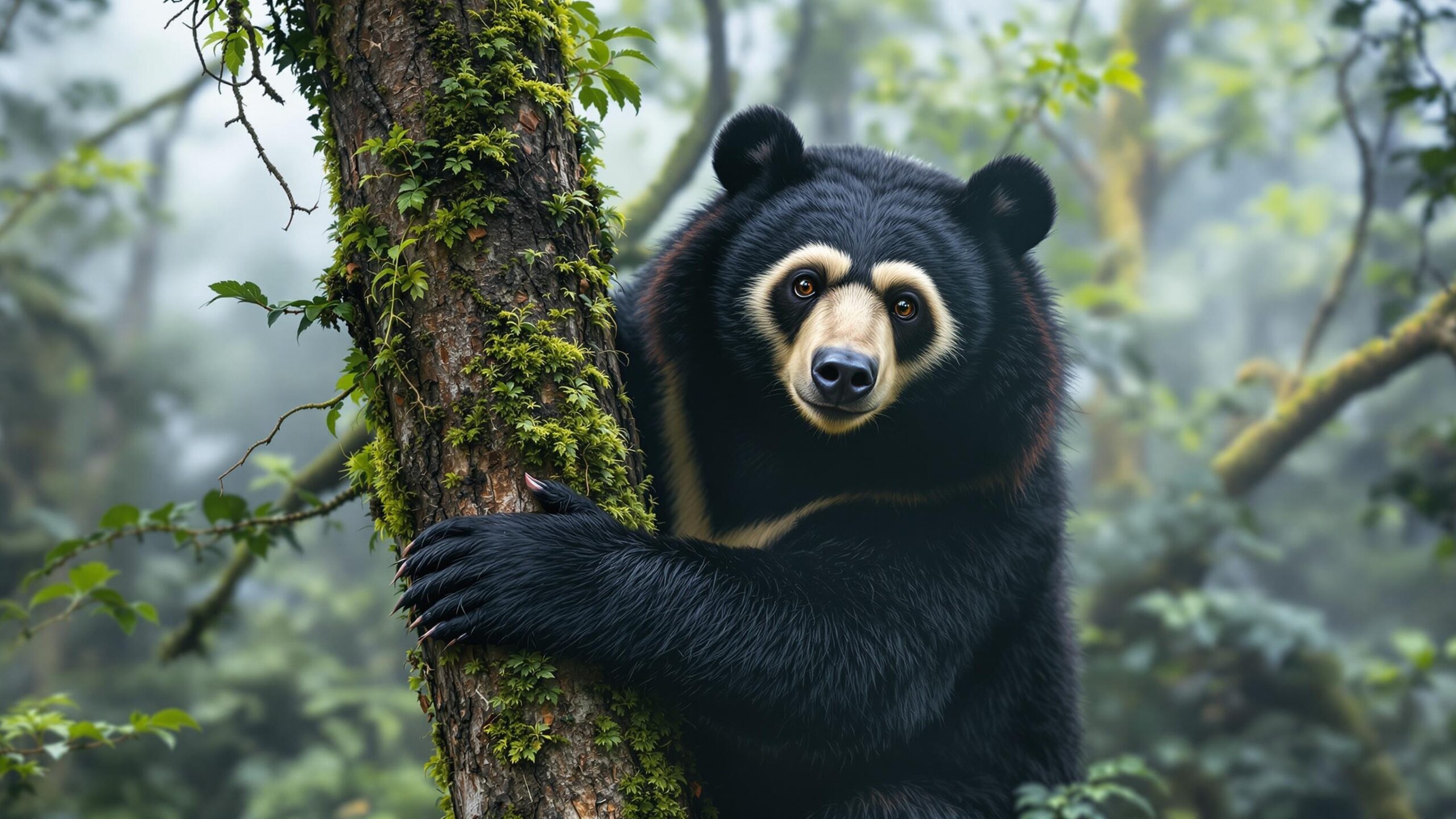Guardians of the Andes: Discovering the World of the Spectacled Bear
High in the mist-shrouded cloud forests and rugged mountain slopes of the Andes lives one of the world’s most elusive and endearing bears: the Spectacled Bear. Also known as the Andean bear, this solitary, shaggy-coated mammal is South America’s only native bear species and one of the few remaining links to a once more widespread lineage of short-faced bears. With their distinctive facial markings that often resemble spectacles, these bears are not only icons of high-altitude wilderness but also keystone species in maintaining the health and vitality of their fragile ecosystems. The Spectacled Bear, scientifically known as Tremarctos ornatus, opens a fascinating window into a world of mountain biodiversity, ancient evolutionary history, and the quiet resilience of life lived among the clouds.
The Unique Biology and Significance of the Spectacled Bear
The Spectacled Bear is unlike any of its bear relatives. Weighing between 130 to 440 pounds, depending on sex and habitat, and measuring up to six feet in length, it is medium-sized by bear standards. What makes it immediately recognizable is the creamy or pale yellow markings on its face and chest, set against a dark brown or black coat. These markings are unique to each individual, providing not only identity but a sense of personality and charm.
Adapted to life in the Andes, these bears are accomplished climbers, often found navigating steep terrain and dense forests with surprising agility. Their curved claws and strong forelimbs make them excellent at ascending trees and steep rocky faces in search of food. Omnivorous and opportunistic, Spectacled Bears consume a wide range of foods, with a diet heavily skewed toward fruits, bromeliads, cacti, and palm nuts. Despite their ability to hunt small animals, they are primarily herbivorous, which positions them as crucial seed dispersers in the ecosystems they inhabit.
As ecosystem engineers, Spectacled Bears influence the distribution and regeneration of plant life throughout their range. Their foraging behaviors create paths through dense vegetation, and their droppings often germinate new plants. In this way, they sustain the forest as much as it sustains them, making them an essential part of the Andean ecological web.
Cloud Forest Specialists: Andean Highland Bears
One of the most vital sub-groups of Spectacled Bears includes those dwelling in the cloud forests of Colombia, Ecuador, Peru, and Bolivia. These bears thrive in elevations ranging from 4,500 to 10,000 feet, where the misty forests teem with moss-covered trees, orchids, and a wealth of fruits. Here, the bears rely heavily on fruiting trees, bromeliads, and epiphytic plants that grow high in the canopy.
Bears in this sub-region have adapted to a humid, arboreal lifestyle, often climbing trees to sleep in leafy nests and forage for food. During the fruiting season, these bears play a vital ecological role, dispersing seeds far and wide through their travels. They have also been observed manipulating branches with remarkable dexterity, a behavior that underscores their intelligence and adaptability. The cloud forest Spectacled Bear is a symbol of balance, thriving in an environment where moisture, elevation, and biodiversity converge.
Dry Forest Wanderers: Bears of the Andean Slopes and Valleys
Further west and in lower elevations, another population of Spectacled Bears inhabits seasonally dry tropical forests, montane scrublands, and inter-Andean valleys. These bears must navigate a more arid and fragmented landscape, where food sources are more sporadic and temperatures more extreme. Their diets here are more varied and opportunistic, often including cacti, corn, and other cultivated crops, which brings them into more frequent contact with human communities.
Despite the challenges, these bears demonstrate extraordinary resilience. They make use of small forest patches, steep ravines, and rocky outcrops to travel, rest, and forage. In this environment, their role as seed dispersers becomes even more crucial. They are known to favor ripe figs and the fruit of various cacti, and their droppings help propagate plants vital to the survival of other wildlife species in these fragile ecosystems.
Dry forest Spectacled Bears often face more significant conservation challenges due to habitat fragmentation and human-wildlife conflict. Yet, their continued presence in these semi-arid zones is a testament to their adaptability and the interconnectedness of Andean habitats.

Bears on the Border: Cross-Region Migrators
One of the most intriguing aspects of Spectacled Bear ecology is their seasonal and elevational migration. Some individuals roam between cloud forests and lower dry forests, following food availability across vertical landscapes. This behavior links distinct ecosystems and underscores the importance of habitat connectivity across the Andean range.
These migratory bears traverse long distances, sometimes crossing agricultural lands and even national borders. Their movement patterns help maintain genetic diversity and ensure the continued dispersal of plant species across regions. Scientists tracking these bears with GPS collars have uncovered previously unknown routes and behaviors, deepening our understanding of their ecology and raising awareness about the need for large, contiguous protected areas.
Cross-region migrators are particularly vulnerable to habitat loss, road development, and fencing, which can sever corridors essential to their survival. Preserving these travel routes is a top priority for conservationists working to protect not just individual populations, but the genetic and ecological flow between them.
Behavioral Mysteries and Remarkable Intelligence
Though largely solitary, Spectacled Bears exhibit behaviors that reflect a high degree of intelligence and environmental awareness. They build platforms or nests in trees to rest, often reusing or rebuilding these structures seasonally. Their foraging techniques display foresight and precision, such as stripping bark to reach sap or methodically removing fruits from tough husks.
Mothers raise one to two cubs, usually born during the wet season when food is abundant. The cubs remain with the mother for over a year, learning essential survival skills such as climbing, foraging, and avoiding threats. The tenderness shown in these maternal bonds is touching and has been captured in rare camera trap footage showing cubs playfully interacting with their mothers.
Spectacled Bears also use vocalizations and scent marking to communicate. Their deep huffs, soft grunts, and claw-marked trees help establish territory and identify individuals, contributing to a complex, though poorly understood, social structure. These behaviors continue to intrigue researchers and conservationists who strive to unlock the secrets of their quiet lives.
A Cultural and Conservation Icon
In the mythologies of Andean cultures, the Spectacled Bear often features as a powerful spiritual being, a protector of the forest, and a symbol of strength and introspection. Known locally as “ukuko” or “jukumari,” the bear appears in Quechua and Aymara stories and traditional festivals, where it is both feared and revered.
Unfortunately, centuries of habitat encroachment and fear-based persecution have taken a toll. Spectacled Bears are now listed as Vulnerable by the IUCN, with populations declining due to habitat fragmentation, poaching, and conflict with agriculture. Conservation efforts, however, are gaining momentum through community education, wildlife corridors, and protected reserves. Programs in countries like Peru and Ecuador now integrate local knowledge and cultural reverence into conservation planning, creating a bridge between tradition and modern science.
Inspiring the Next Generation of Wildlife Protectors
The Spectacled Bear represents more than just an elusive mammal—it embodies the complex beauty of the Andean landscape and the delicate balance of its ecosystems. It challenges us to look beyond appearances, to value the hidden, and to protect the interconnected web of life.
As you explore the subcategories of this remarkable bear—its cloud forest strongholds, dry forest retreats, migratory corridors, and behaviorally rich habits—you’ll discover a narrative that is as much about conservation as it is about celebration. Each page offers a chance to understand the role these bears play in shaping mountain ecosystems, and how their survival is linked to our own appreciation and stewardship of the natural world.
Let the Spectacled Bear be your guide into the heart of the Andes—a symbol of resilience, mystery, and the enduring wonder of wild places. Dive deeper into each facet of its life, and become part of the growing chorus working to ensure that these gentle mountain guardians continue to roam the cloud-kissed ridges for generations to come.

